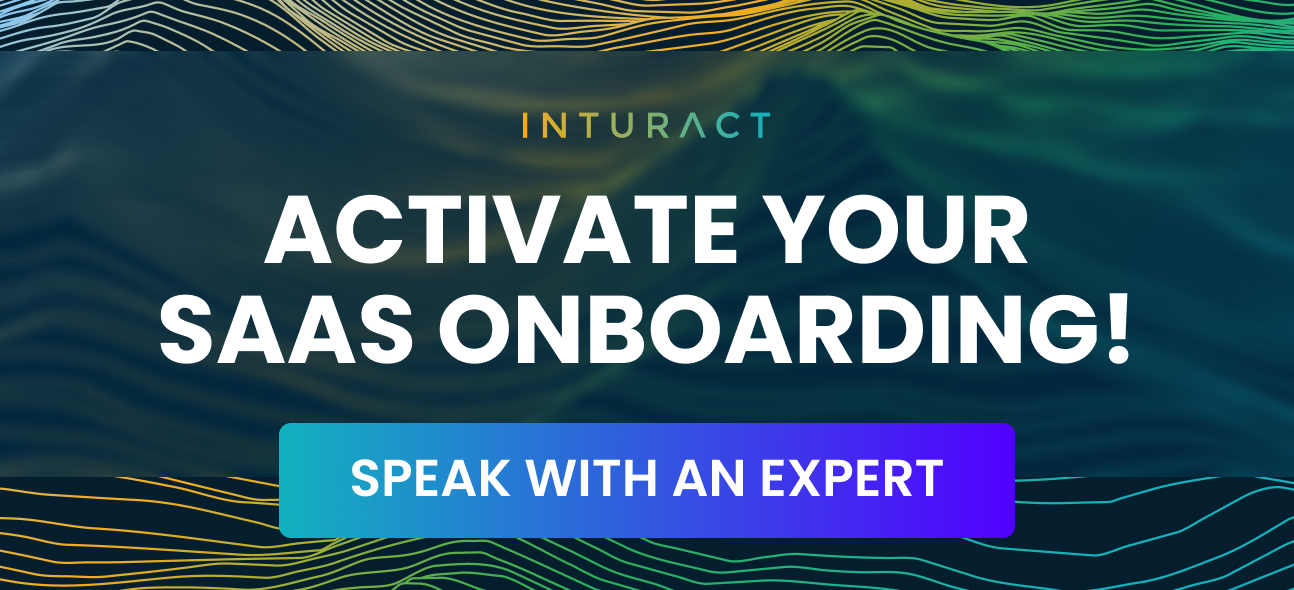For SaaS products, the difference between success and obscurity often hinges on two pivotal aspects: user onboarding and product adoption. Today, user preferences shift rapidly and competition is intense, so effective onboarding and adoption strategies are not just beneficial—they are essential.
This blog talks about user onboarding and product adoption strategies that are not just theoretical but battle-tested in the real-world SaaS arena. Whether you're launching a new product or seeking to revitalize an existing one, the insights shared here will help you craft a user experience that reduces churn.
Strategy 1: Maximizing Engagement with Interactive Onboarding Tutorials
Direct Engagement with Product Features
Interactive onboarding tutorials excel by allowing users to engage directly with your product's features from the outset. Instead of passive video guides or text instructions, these tutorials involve users in a 'learn by doing' approach.
For example, if your SaaS product has a complex dashboard, the tutorial can guide users through creating their first report or setting up their dashboard, offering interactive prompts and guidance at each step.
So what should be your feature adoption strategy?
A feature adoption strategy for Software as a Service (SaaS) involves a systematic approach to encouraging users to effectively utilize and integrate new functionalities within a software platform. It encompasses targeted communication, user education, and intuitive design to enhance user understanding and engagement with specific features. By aligning features with user needs and highlighting their value, SaaS providers aim to accelerate the product adoption process, ensuring that users not only discover but also fully leverage the capabilities offered. This strategy often involves phased rollouts, user training materials, and continuous feedback loops to optimize user experience and drive sustained utilization of the software's diverse features.
Contextual Guidance and Immediate Value
The strength of interactive tutorials lies in their context-sensitive nature. When a user encounters a new feature, the tutorial can trigger a mini-guide relevant to that feature, providing immediate assistance. This method of supporting feature adoption helps in reducing the initial learning curve, as users don't have to leave the application to seek help.
For instance, if your product includes an analytics feature, the tutorial can pop up the first time the user accesses this section, guiding them through the analysis process.
Personalized User Experience
Personalization plays a key role in effective interactive tutorials. By offering different tutorial paths based on the user's role or industry, you can ensure that the content is relevant and engaging.
For example, a marketing professional and a software developer might use your product differently, and personalized tutorials can guide them through the most relevant features for their specific needs.
Feedback Loops and Improvement
While focusing solely on the tutorial aspect, it's important to design them with feedback loops. This can be as simple as asking the user if the tutorial was helpful or if they need more information on a specific feature.
Such immediate feedback helps users feel heard and supported, encouraging further exploration of the product.
Reducing Overwhelm with Progressive Disclosure
A vital aspect of these tutorials is the use of progressive disclosure - introducing features to users gradually, rather than overwhelming them with all functionalities at once. This approach can be implemented by unlocking new tutorial segments as the user becomes more proficient, ensuring a manageable pace of learning.
Strategy 2: Personalized User Paths - Customizing Onboarding to User Personas and Behaviors
Identifying User Personas
The first step in creating personalized user paths is identifying distinct user personas for your SaaS product. These personas are archetypes representing different segments of your user base, each with unique needs, goals, and behaviors.
For example, a project management tool might have personas like 'Project Manager', 'Team Member', and 'Executive'. Understanding these personas allows you to tailor the onboarding experience to each group's specific needs.
Behavior-Driven Onboarding Flow
Once personas are established, the onboarding process can be tailored based on the user's actions.
For instance, if a 'Team Member' starts using features related to task management more frequently, the onboarding can focus on advanced functionalities in this area, skipping irrelevant features like high-level project planning which might be more suited for a 'Project Manager'.
Segmented Tutorial Content
Within the onboarding process, content can be segmented to address the specific interests and needs of each persona. This might involve creating different sets of tutorial videos, help articles, or interactive guides that are relevant to each persona.
For example, an 'Executive' might receive content focusing on reporting and analytics, while a 'Team Member' receives more detailed guides on daily task management.
Dynamic Onboarding Triggers
Using dynamic triggers based on user behavior can enhance the personalization of the onboarding journey. These triggers can initiate specific onboarding sequences when a user performs a certain action or reaches a milestone. For instance, if a user hasn't utilized a key feature within a certain period, a targeted tutorial might be prompted to encourage exploration of that feature.
By tailoring the onboarding journey to individual user personas and behaviors, you ensure that each user feels that the product is catered to their specific needs. This personalized approach not only enhances user engagement but also increases overall satisfaction with the product, leading to better retention and product adoption rates.
Strategy 3: In-App Messaging and Notifications - Timely Guidance and Updates Within the User's Workflow
Aligning in-app messages and notifications with the user’s goals and objectives enhances their perceived value. Messages that help users achieve their aims with your product, such as achieving a certain level of proficiency or completing a project, can boost user satisfaction and perceived efficiency of the tool.
Context-Sensitive Messaging
In-app messaging is a powerful tool for delivering real-time, context-sensitive guidance and updates to users. These messages can be triggered based on specific user actions or stages in their journey.
For instance, if a user spends a significant amount of time on a complex feature, a message could offer a quick tip or link to a helpful tutorial. This immediate assistance ensures users don't feel lost and enhances their ability to use your product effectively.
Notifications for Engagement and Retention
Notifications within the app can serve as reminders or prompts to engage users. They can be used to alert users about new features, nudge them to complete an onboarding step, or provide updates on their usage.
For example, a notification could inform users about a newly released feature that could enhance their workflow, thereby increasing engagement and providing a sense of continual evolution in the product.
It's crucial to balance the frequency and relevance of these communications. Over-messaging can lead to annoyance and disengagement, while under-messaging might leave users uninformed and unsupported. Analyzing user interaction with these messages can help in striking the right balance, ensuring that users receive timely and helpful information without feeling overwhelmed.
Strategy 4: Customer Success Support - Proactive Assistance in the User Adoption Journey
Integrating Customer Success Early On
The integration of customer success support in the onboarding process marks a proactive approach to user adoption. This strategy involves reaching out to users early in their journey, potentially even before they encounter issues.
For example, after a user has been active for a predetermined period, customer success representatives can initiate contact, offering assistance or resources to ensure the user is making the most of the product.
Tailored Support Based on User Activity
Customer success support should be tailored based on user activity and needs. By monitoring how users interact with your product, customer success teams can identify areas where users might need help.
For instance, if a user has not utilized a key feature, the support team can reach out with specific guidance or training on that feature.
Educational Resources and Training
Providing users with educational resources and training sessions is another key component of customer success support. This could include webinars, detailed guides, and personalized training sessions that help users understand and utilize the full range of your product's features and capabilities.
Building a Community for User Engagement
Encouraging users to join a community, such as a user forum or a social media group, can also be beneficial. In these communities, users can share experiences, tips, and best practices. This not only helps with the adoption of the product but also fosters a sense of belonging and loyalty among users.
Strategy 5: Feedback Loops and Surveys - Harnessing User Insights for Onboarding and Adoption Enhancement
Feedback loops and surveys are vital tools for understanding user experiences and expectations. Implementing these tools effectively involves timing them appropriately within the user journey. For instance, a short survey can be triggered after a user completes an onboarding step or uses a new feature for the first time. The goal is to gather insights while the experience is fresh in the user's mind, ensuring more accurate and actionable feedback.
Designing Engaging and Concise Surveys
The design of these surveys is crucial. They should be concise, engaging, and easy to complete. Long, cumbersome surveys often lead to low response rates. Questions should be direct and relevant, focusing on specific aspects of the user experience, such as ease of use, clarity of instructions, or perceived usefulness of features.
Open-ended Questions for Qualitative Insights
Including open-ended questions in surveys provides users with the opportunity to share detailed feedback and suggestions. This qualitative data can be a goldmine of insights, revealing user pain points, unmet needs, and potential areas for improvement that might not be captured through structured questions.
Analyzing and Acting on Feedback
Collecting feedback is only the first step. Analyzing this data to uncover trends, common issues, and user sentiments is essential. This analysis should then be translated into actionable insights, leading to improvements in the onboarding process, feature enhancements, or changes in user support strategies.
Conclusion
Creating an effective onboarding experience is not a one-size-fits-all solution; it demands a deep understanding of your product and audience, backed by precise insights and data.
Often, onboarding doesn't get the attention it needs because there's so much else to do, like building the product and helping customers. Learn more about user onboarding best practices here.
That's where we at Inturact come in.
We're experts in making onboarding experiences for SaaS products, with over 15 years of experience. We know how to make an onboarding that fits your product and your users perfectly. With us, you can turn more of the people who sign up into loyal, paying customers. Don't let user onboarding be something you think about later. Get in touch with us to see how we can make your onboarding better and really help your business.



